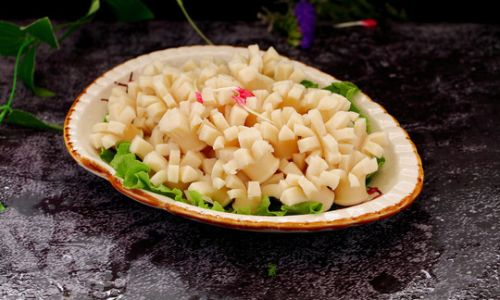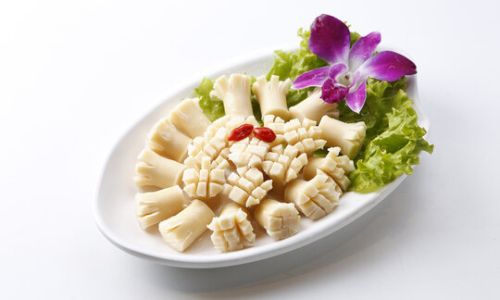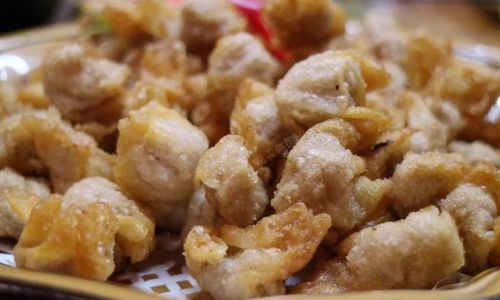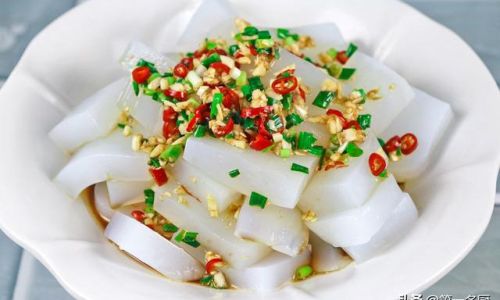Introduction
Stir-fried osmanthus sausage, or Chao Guihua Chang in Mandarin, is a dish that embodies the harmony of flavors and textures central to Chinese gastronomy. Rooted in the culinary traditions of southern China, this recipe combines the smoky richness of cured sausage with the delicate floral notes of osmanthus flowers, creating a dish that is both comforting and elegantly aromatic. While the name might evoke images of delicate petals, the dish’s true magic lies in its balance of savory and sweet, with the osmanthus serving as a subtle, fragrant accent rather than a dominant ingredient. This article explores the history, preparation, and cultural significance of stir-fried osmanthus sausage, offering a step-by-step guide to recreating this timeless dish in your own kitchen.
The Cultural Tapestry of Osmanthus in Chinese Cuisine
Osmanthus, or Guihua in Chinese, has been cherished for millennia as both a culinary and medicinal herb. Revered in poetry and art, the golden-hued flowers symbolize nobility, purity, and autumn’s bounty. In cooking, dried osmanthus petals are often infused into teas, desserts, and savory dishes to impart a honey-like sweetness and a distinctive perfume. When paired with cured meats like sausage, the flowers elevate the dish’s complexity, cutting through richness with their ethereal fragrance.
Ingredients: Assembling the Flavors
To prepare stir-fried osmanthus sausage, gather the following ingredients:

- 200g Chinese lap cheong sausages: These sweet, slightly fermented sausages, typically made from pork, form the dish’s savory backbone.
- 1 tablespoon dried osmanthus flowers: Available in specialty stores or online, these petals should be rehydrated before use.
- 1 medium carrot, julienned: Adds a crisp sweetness.
- ½ red bell pepper, thinly sliced: For vibrant color and texture.
- 3 garlic cloves, minced: Aromatic base.
- 1-inch ginger, grated: Provides warmth and depth.
- 2 scallions, chopped: Separate whites and greens for layered flavor.
- 1 tablespoon oyster sauce: Umami-rich binder.
- 1 teaspoon soy sauce: For saltiness and color.
- ½ teaspoon sugar: Balances the sausage’s sweetness.
- 1 tablespoon Shaoxing wine: Optional, but enhances complexity.
- 2 tablespoons cooking oil: Peanut or vegetable oil preferred.
- Salt and white pepper: To taste.
Preparation: The Art of Mise en Place
- Rehydrate the Osmanthus: Soak dried osmanthus petals in 2 tablespoons of warm water for 10 minutes. Strain, reserving the liquid.
- Prepare the Sausage: Steam the lap cheong for 8–10 minutes to soften. Slice diagonally into ¼-inch pieces.
- Chop Vegetables: Julienne carrots and bell peppers evenly to ensure even cooking. Mince garlic and ginger finely.
- Marinade (Optional): Toss sausage slices with ½ teaspoon soy sauce and a pinch of sugar for 15 minutes to enhance sweetness.
Cooking Technique: Mastering the Wok
Stir-frying demands precision and heat control. Follow these steps for perfection:
- Heat the Wok: Preheat a carbon steel wok over high heat until droplets of water evaporate instantly. Add oil and swirl to coat.
- Sear the Sausage: Add sausage slices in a single layer. Allow them to caramelize (1–2 minutes) before stirring. This step renders fat and intensifies flavor.
- Sauté Aromatics: Push sausage to one side. Add garlic, ginger, and scallion whites. Stir-fry until fragrant (30 seconds).
- Introduce Vegetables: Toss in carrots and bell peppers. Stir-fry vigorously for 2 minutes, maintaining crispness.
- Deglaze and Season: Pour in Shaoxing wine (if using) and reserved osmanthus liquid. Add oyster sauce, soy sauce, sugar, and a pinch of white pepper. Stir to coat.
- Finish with Osmanthus: Sprinkle rehydrated osmanthus petals over the dish. Fold gently to distribute without bruising the petals.
- Garnish and Serve: Transfer to a platter. Garnish with scallion greens and a final twist of white pepper.
Tips for Perfect Stir-Frying

- Wok Height: Use a well-seasoned carbon steel wok for even heat distribution.
- Heat Control: Maintain high heat throughout cooking to achieve wok hei (breath of the wok), the smoky flavor that defines authentic stir-fries.
- Timing: Overcooking vegetables leads to mushiness. Aim for al dente texture.
- Osmanthus Subtlety: Use sparingly; overpowering the dish with petals can result in a soapy aftertaste.
Serving Suggestions: A Feast for the Senses
Stir-fried osmanthus sausage shines as part of a multi-course meal. Pair it with:
- Steamed Jasmine Rice: To absorb the flavorful sauce.
- Stir-Fried Bok Choy: For a crisp, green contrast.
- Hot and Sour Soup: To cleanse the palate between bites.
- Chilled Osmanthus Tea: A fragrant beverage that echoes the dish’s floral notes.
Variations and Modern Twists
While tradition honors the classic recipe, contemporary cooks often experiment:
- Vegetarian Adaptation: Substitute sausage with textured vegetable protein (TVP) or king oyster mushroom slices. Marinate in liquid smoke for depth.
- Spicy Kick: Add dried chili flakes or Sichuan peppercorns during aromatics.
- Nutty Crunch: Toss in toasted cashews or pine nuts before serving.
- Osmanthus Glaze: Reduce osmanthus-infused liquid with honey for a sticky finish.
Health and Nutritional Benefits
Beyond its gustatory pleasures, stir-fried osmanthus sausage offers nutritional merit:

- Protein Power: Lap cheong provides lean protein, essential for muscle repair.
- Antioxidant Boost: Osmanthus flowers contain quercetin and kaempferol, compounds linked to anti-inflammatory benefits.
- Fiber-Rich Veggies: Carrots and bell peppers contribute dietary fiber, aiding digestion.
- Moderation is Key: While delicious, the dish’s sodium and fat content warrant mindful portioning.
Conclusion: A Culinary Legacy Reborn
Stir-fried osmanthus sausage is more than a meal—it’s a testament to the enduring creativity of Chinese cuisine. By marrying earthy sausage with heavenly osmanthus, cooks have crafted a dish that bridges tradition and innovation, simplicity and sophistication. Whether served at a family banquet or enjoyed as a quick weeknight dinner, this recipe invites diners to savor the interplay of flavors while honoring centuries of culinary artistry. As you embark on your own journey with this dish, remember that cooking is an act of love—a gesture that transforms ingredients into memories. So, heat your wok, gather your ingredients, and let the fragrance of osmanthus guide you to a meal that delights both body and spirit.






0 comments